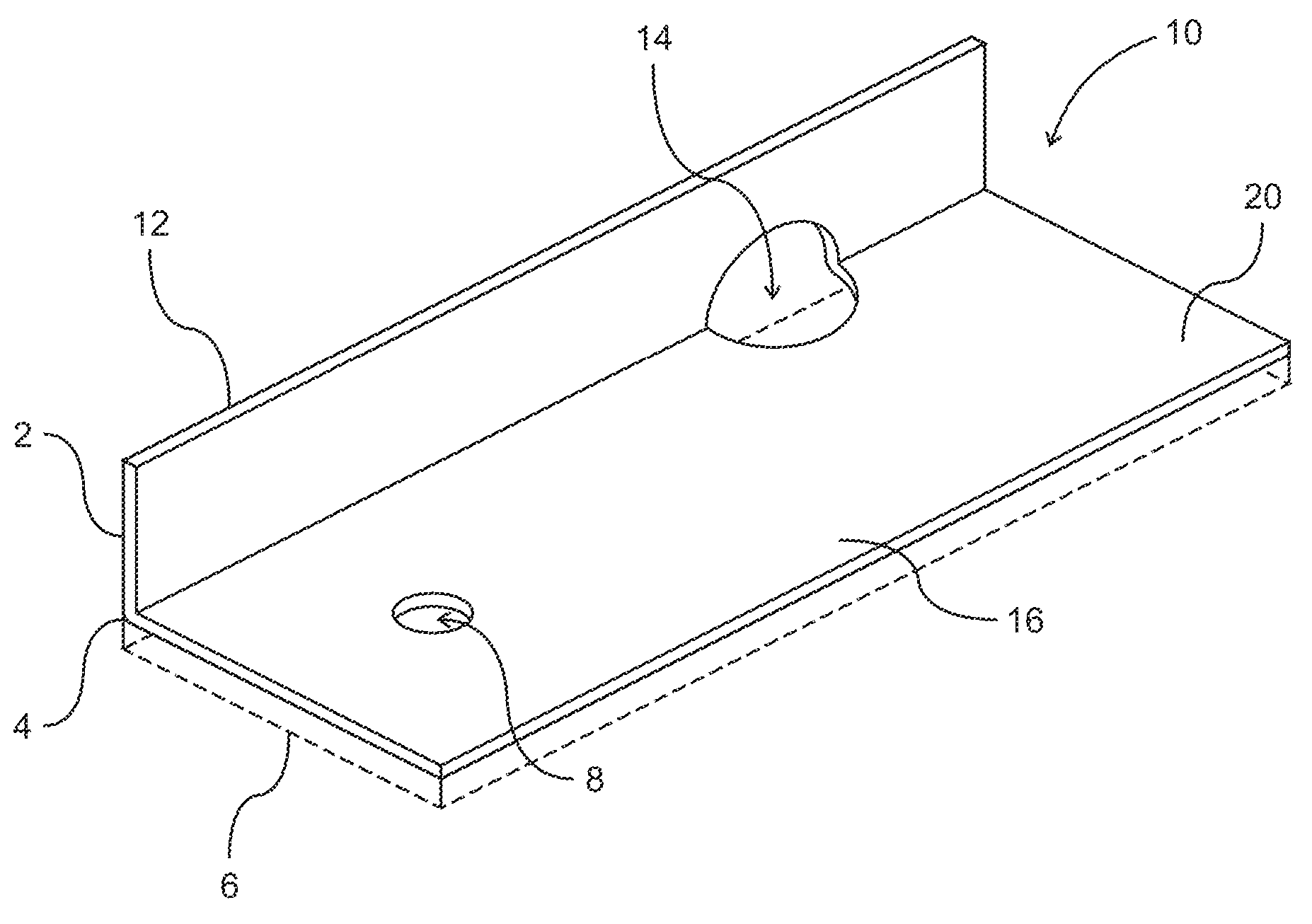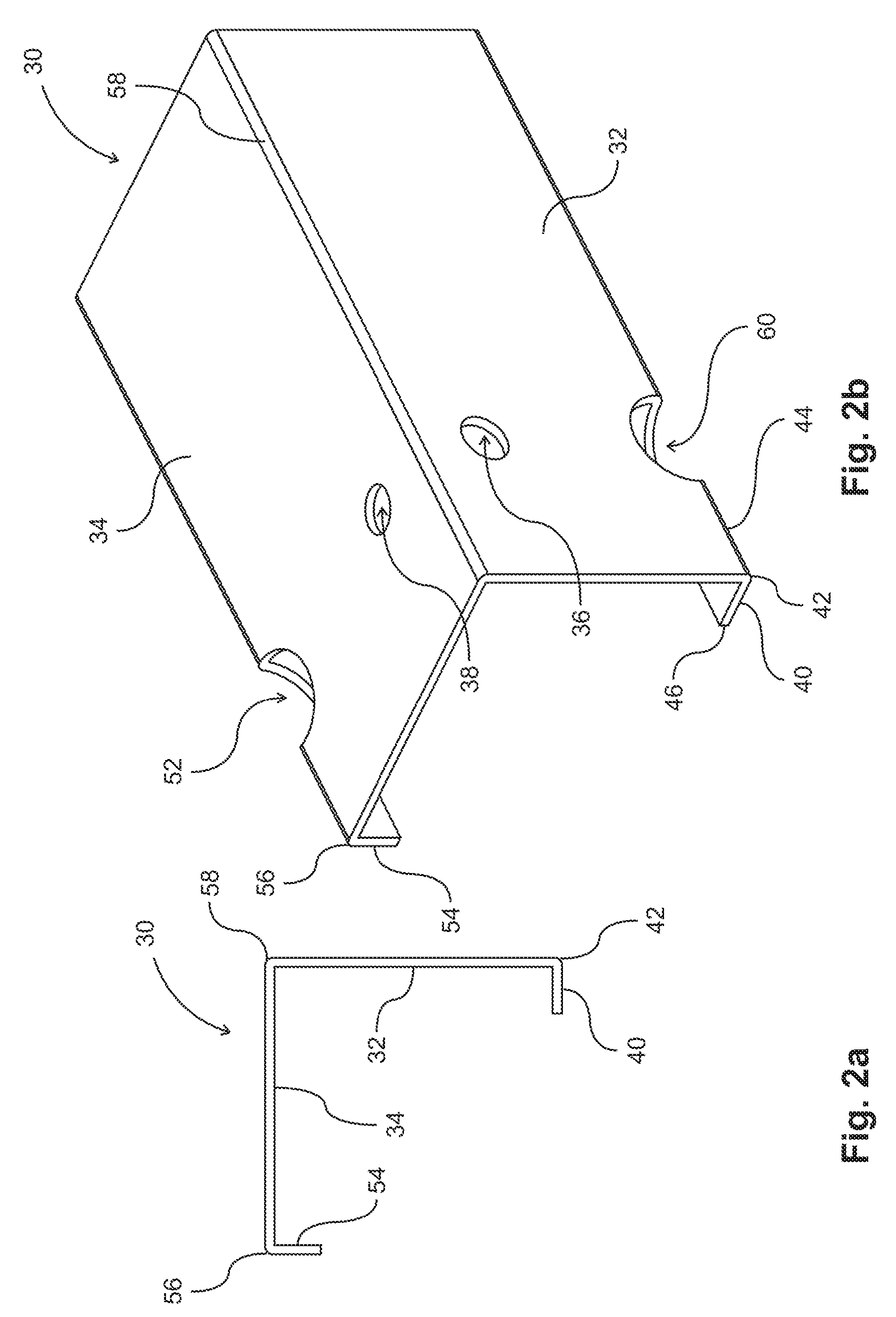Lath Furring Strips
- Summary
- Abstract
- Description
- Claims
- Application Information
AI Technical Summary
Benefits of technology
Problems solved by technology
Method used
Image
Examples
Embodiment Construction
[0077]The following description is of the best-contemplated mode of carrying out the invention. This description is made for the purpose of illustrating the general principles of the invention and should not be taken in a limiting sense. The scope of the invention is best determined by reference to the appended claims. Preferable embodiments of the present invention are described with reference to the FIGS. 1-20. FIG. 1, FIG. 5, and FIG. 6 show various embodiments of increasing the waterproofing characteristics of the lath furring strip. FIG. 2, FIG. 3, and FIG. 4 show various embodiments of the shape of the lath furring strip without any waterproofing elements, but can incorporate the waterproofing elements of the embodiments in any other figure. FIG. 7 and FIG. 8 show various embodiments of how the lath furring strip and lath are assembled, and may incorporate any of the waterproofing or lath shapes in any of other figures. FIG. 9, FIG. 10, FIG. 11, FIG. 12, FIG. 13, and FIG. 14 s...
PUM
 Login to View More
Login to View More Abstract
Description
Claims
Application Information
 Login to View More
Login to View More - R&D
- Intellectual Property
- Life Sciences
- Materials
- Tech Scout
- Unparalleled Data Quality
- Higher Quality Content
- 60% Fewer Hallucinations
Browse by: Latest US Patents, China's latest patents, Technical Efficacy Thesaurus, Application Domain, Technology Topic, Popular Technical Reports.
© 2025 PatSnap. All rights reserved.Legal|Privacy policy|Modern Slavery Act Transparency Statement|Sitemap|About US| Contact US: help@patsnap.com



